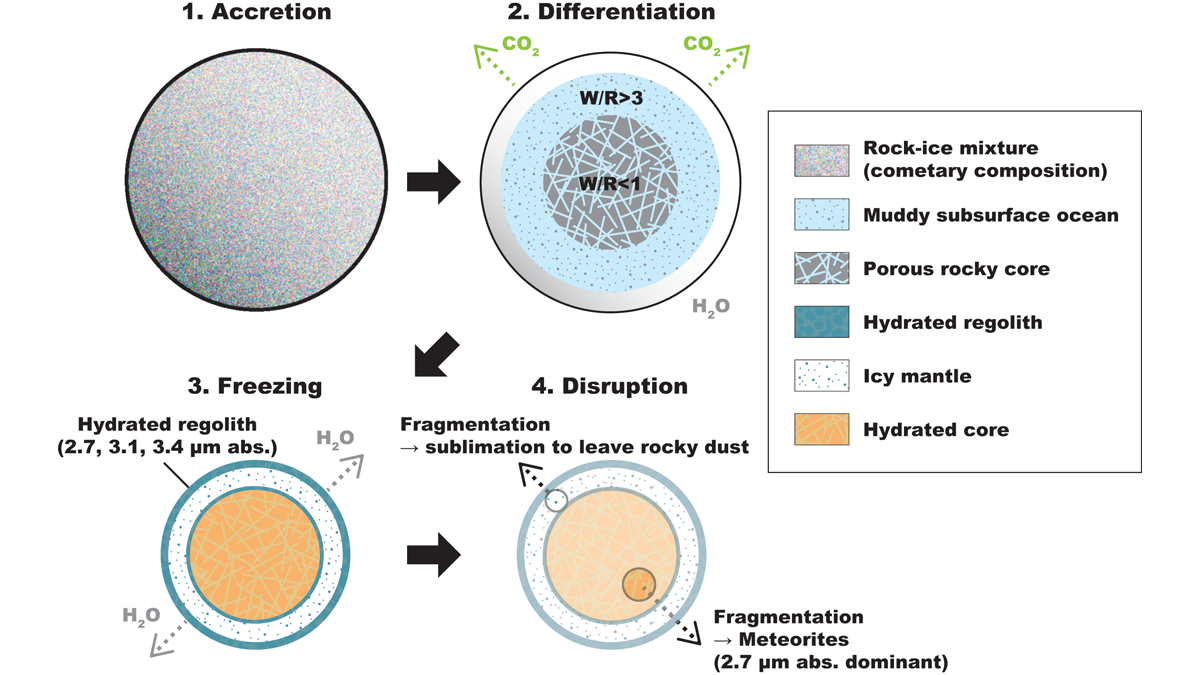Source: AGU Advances
Editors’ Highlights are summaries of recent papers by AGU’s journal editors.
The origin of the Earth’s volatiles (e.g., water) is a perennial puzzle. Most likely they come primarily from volatile-rich (“carbonaceous”) meteorites, which are spectrally similar to volatile-rich asteroids in the main belt. But as Kurokawa et al. [2021] show, the similarity is not exact: some of the main belt asteroids contain ammoniated clays, which are not seen in the meteorites. This is important because ammonia is not expected to be stable so close to the Sun. Instead, Kurokawa et al. propose that the volatile-rich asteroids formed at greater distances (>10 AU) and were then scattered inwards to the main belt. The absence of ammoniated clays in meteorites is explained by positing a layered structure, with the more indurated, ammonia-free rocky core expected to survive impact disruption and atmospheric re-entry. This study bolsters other recent isotopic arguments that an outer solar system reservoir contributed significantly to the Earth’s growth.
Citation: Kurokawa, H., Shibuya, T., Sekine, Y. et al. [2021]. Distant formation and differentiation of outer main belt asteroids and carbonaceous chondrite parent bodies. AGU Advances, 2, e2021AV000568. https://doi.org/10.1029/2021AV000568
—Francis Nimmo, Editor, AGU Advances

